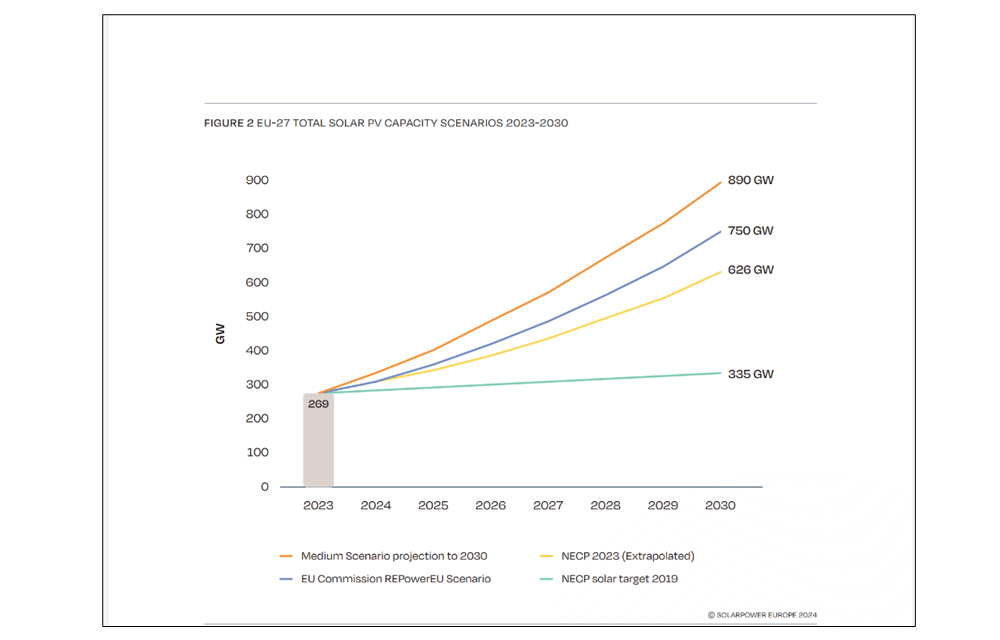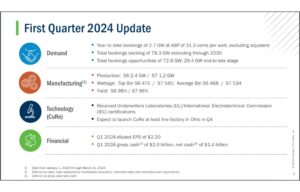- SolarPower Europe has published a new report: Mission Solar 2040 – Europe’s Flexibility Revolution.
- With a flexible, electrified system, more solar can be added to the grid, enabling the EU to reach 1.2 TW of solar or 42% of EU power demand, much higher than the 750 GW EU Solar Strategy goal.
- This requires more flexibility in the grid. Today, flexibility targets do not exist, explaining the lack of political oversight and progress on that front.
Europe’s solar sector association SolarPower Europe (SPE) has published a new report: Mission Solar 2040 – Europe’s Flexibility Revolution, which highlights the pivotal role of solar energy and flexibility in achieving Europe’s green energy goals.
As Solar is growing much more rapidly than any analyst would have forecasted and any policymaker expected, infrastructure and policy frameworks in mature solar markets like Europe are not prepared for the massive solar wave to come.
Having reached an operating solar fleet of over one quarter of a TW (269 GW) in 2023, SolarPower Europe projects the EU’s solar power fleet to grow to nearly 900 GW by 2030, outpacing national and EU solar targets. While this is number is based on a medium scenario, solar could grow much more under the right boundary conditions, or less if obstacles are not removed.
Walburga Hemetsberger, CEO of SolarPower Europe, said: “It is time to take the next step in energy transition. We need a flexibility revolution, surrounding renewables with grids, storage and electrification. The new political cycle is an opportunity to build the new energy transition agenda. We call on EU leaders to implement the existing electricity market regulation, set new targets for renewables and flexibility to 2040 and adopt an EU electrification action and investment plan as soon as possible.”
Mission Solar 2040 maps out three scenarios through the coming decades; solar-as-usual (SAU), solar + flexibility (SF), and solar + flexibility + electrification (SFE). Compared to SAU, the SFE scenario reduces curtailment – solar energy wasted – by 66% in 2030 and 49% in 2040. The more efficient utilisation of solar energy leads to gains across the economy, according to SolarPower Europe.
The study highlights 4 major benefits of a flexible energy system suited to solar and wind:
- With a flexible, electrified system, more solar can be added to the grid. By the end of this decade, the EU could reach 1.2 TW of solar or 42% of EU power demand, much higher than the 750 GW EU Solar Strategy goal. By 2040, the EU could host even 2.4 TW of solar, meeting as much as 39% of the bloc’s growing power demand.
- Unlocking flexibility solutions reinforces the PV business case. In 2040, solar curtailment rates are reduced by 49% and solar capture prices increase by 54% compared to the baseline, according to the study.
- Unlocking flexibility solutions reduces total energy system costs, thanks to the massive cost savings from the electrification of the heat, transport and hydrogen sector. Annual net system cost savings amount to 32 billion EUR in 2030 and 160 billion EUR in 2040.
- Very important, SolarPower Europe points out, ramped-up solar deployment would empower the decarbonisation of the economy – driving down emissions the equivalent of 151 MtCO2eq in 2030 over 550 MtCO² per year in 2040 compared to current forecasts
To deliver the new energy system, the SolarPower Europe had the following policy recommendations for the incoming EU leadership:
- Set EU targets for renewables and flexibility for 2030 and 2040. Flexibility targets do not exist today, explaining the lack of political oversight and progress on that front.
- Improve energy system modelling capacities, by strengthening the Agency for European Regulators (ACER) and by setting up a new EU Energy Agency to reinforce energy system forecasting.
- Unlock investment in flexibility across the energy system, primarily by ensuring full implementation of agreed electricity market legislation.
- Adopt an EU Electrification Action and Investment Plan within the first 100 days of the next Commission’s mandate.
The report was launched live at Euronews on June 24 during a panel with executives from the European Commission and grid organizations ENTSOE and ACER, and is for download accessible here.



